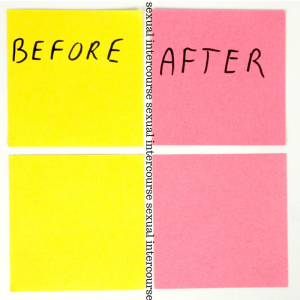
Learning your ABCs…it happened so long ago, in such wonderful, family-oriented, sing-songy ways, right?
I mean, surely everyone’s early childhood was filled with Sesame-Street-style-goodness?
No? Hm.
Well, okay then, maybe at this point at least, as adults, literacy comes easily to everyone?
Wait, what? That’s not so?
Okay, okay, okay, then at least we all know that sex is less complicated that reading, right? So the Easy-as-ABC analogy must hold true there…
…fine. I see your point. And here’s a fantastic lesson to provide that point to your students too:
ABC…EASY AS 123?
Objectives
By the end of this lesson, participants will be able to:
- Describe what makes a person able to successfully practice abstinence, be faithful in a relationship and use condoms.
- Assess the usefulness of the “ABC” approach as a way to prevent HIV and sexually transmitted infections in their own lives, and in the lives of young people overseas.
Rationale
In recent years, the United States government has funded programs that support an “ABC”-based educational approach for HIV prevention, both domestically and in developing nations overseas. In this approach, “A” is for Abstain, “B” is for Be Faithful, and “C” is for Use Condoms. Like abstinence, the term be faithful may have an unclear meaning, or different meanings for different people. In addition, the linear message (i.e., “Be sure to practice A, but if you don’t, then practice B, with C as a last resort”) can leave people with considerable health risks. For example, a person who is practicing “be faithful,” while their partner is not, may acquire a sexually transmitted infection. Or, a couple that practices “being faithful” by having only vaginal intercourse without condoms or other contraceptives may face an unexpected pregnancy.
As these programs gain traction, “ABC” messages will impact on the lives of young people. This lesson gives them the opportunity to assess the meanings of such phrases in their own lives, and the attributes necessary to successfully follow each part of the message — abstaining, being faithful and using condoms.
I hope that you’ll pardon my rather excessive sarcasm early on.
For someone to suggest that avoiding HIV infection is an “easy” proposition is absurd. Really, it just makes me angry. But this is not really the time and place for me to go on endlessly about government policies, the politics around education, the (additional, and different) politics around sexuality and HIV, and grotesqueness with “blaming” someone for contracting HIV when it’s just so “easy” not to. So except for that little rantlette, I will refrain, and will instead focus on this lesson:
This lesson breaks down the steps of abstinence, faithfulness, and condoms and outlines what someone needs to know, needs to have, and needs to be able to do for each of them. These are not easy steps that all people have equal access to – particularly people who have reduced access to a life without targeted prejudice, healthy relationships, education, and sexual health care. Which is interesting to note, because the people with the highest levels of HIV infection are people who go through life fighting prejudice, without healthy relationships, with lower educational attainment, and with reduced (or non-existent) sexual healthcare.
In many ways, the ABC methodology of HIV prevention perpetuates the prejudice against minorities, youth, people who identify as LGBTQ, etc, while maintaining that what they struggle to do is an easy thing. I’m glad that there is a lesson plan that begins to break down those institutional and linguistic oversights.






